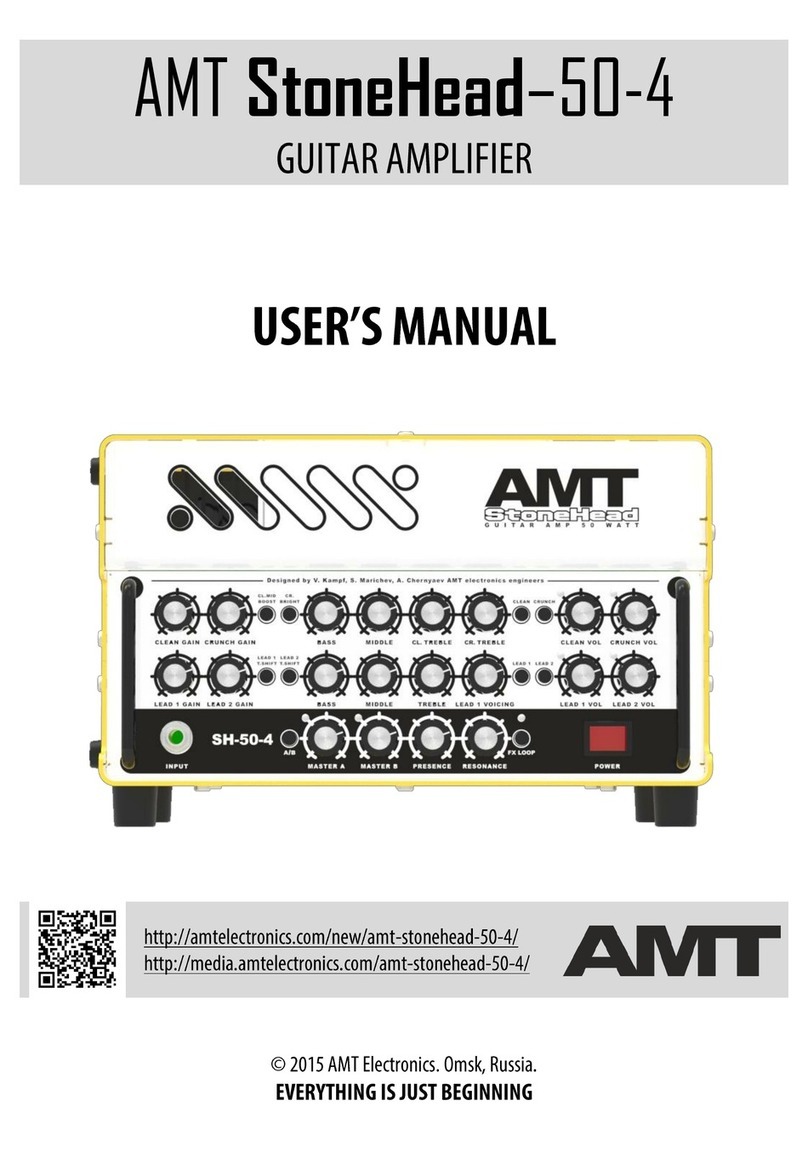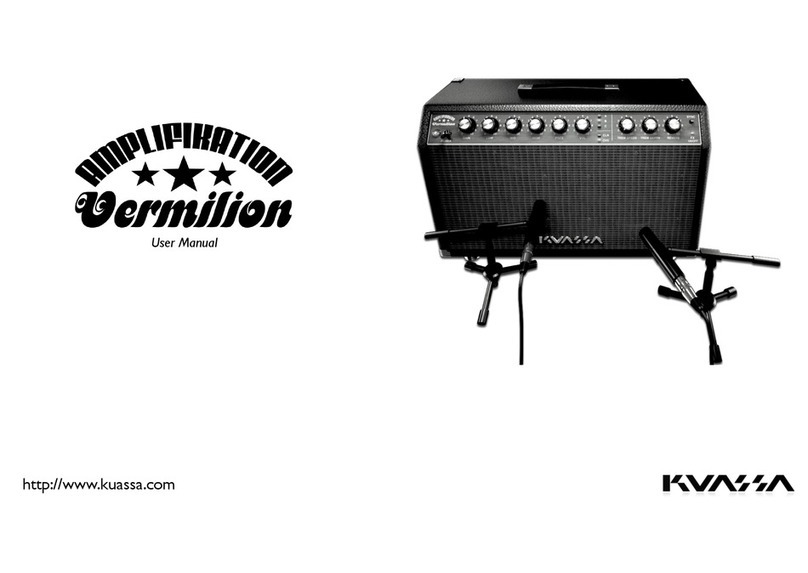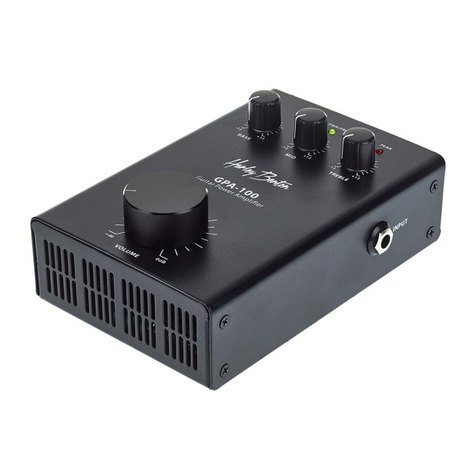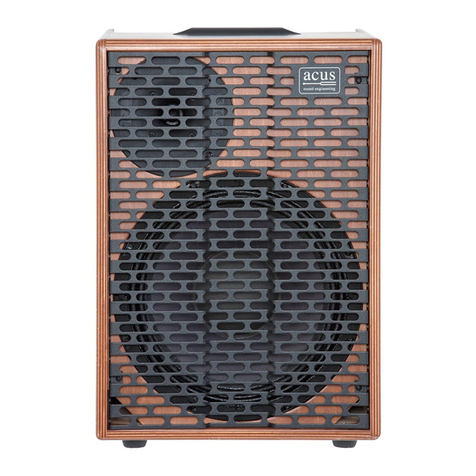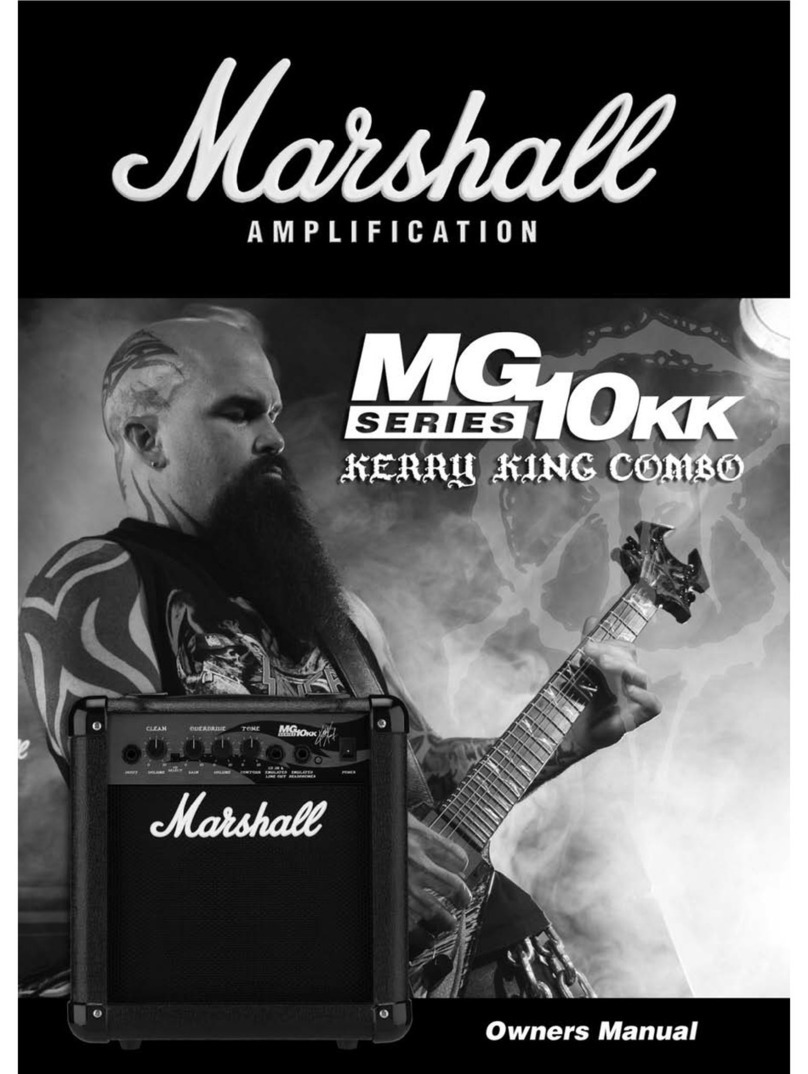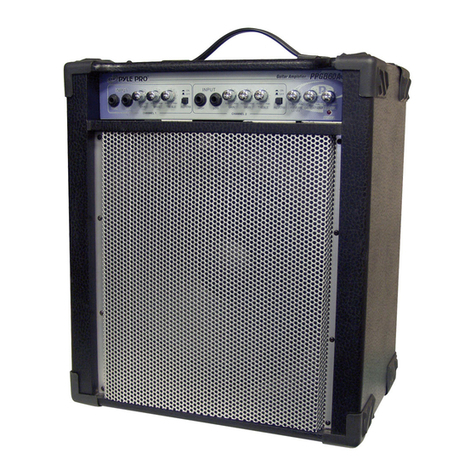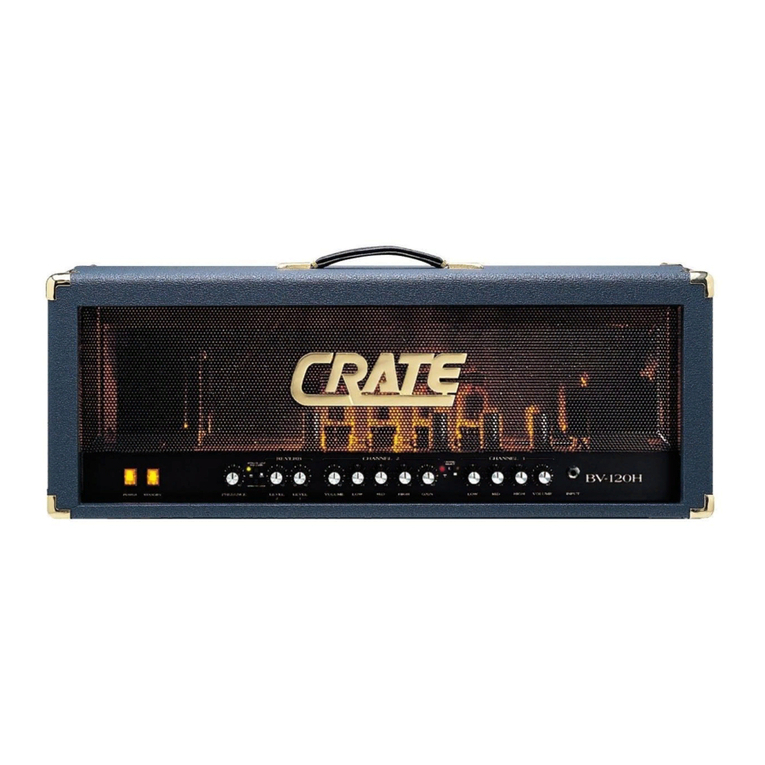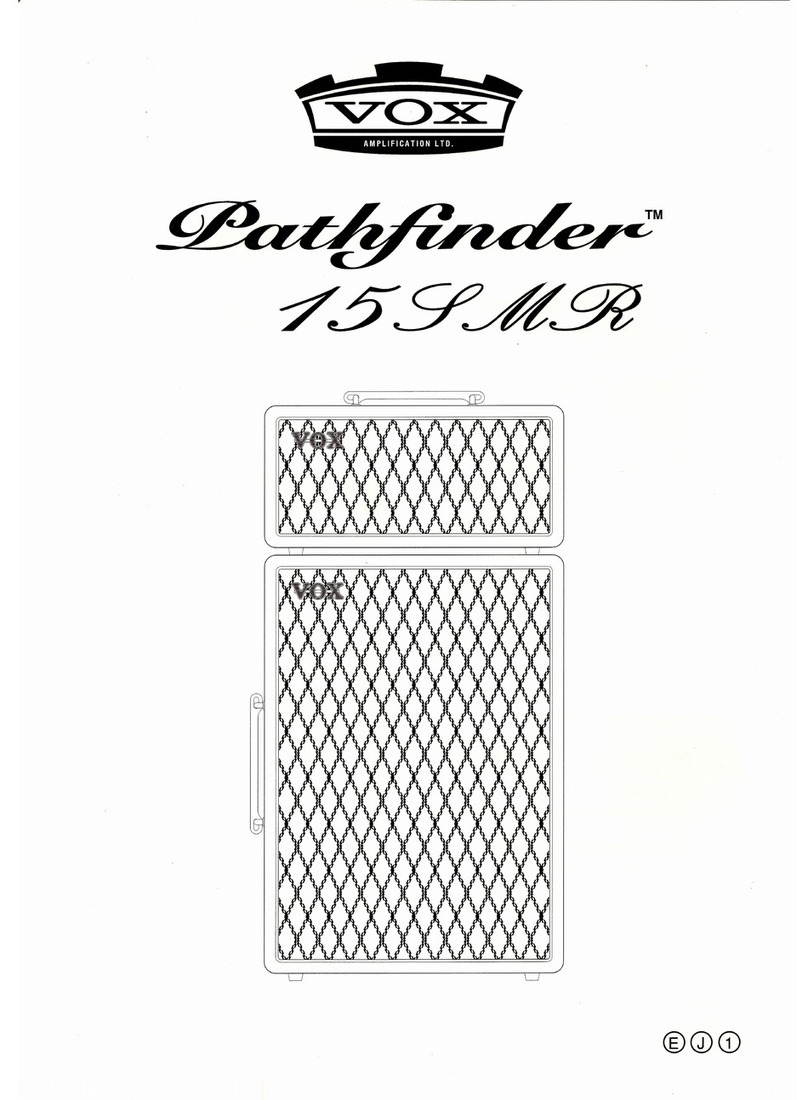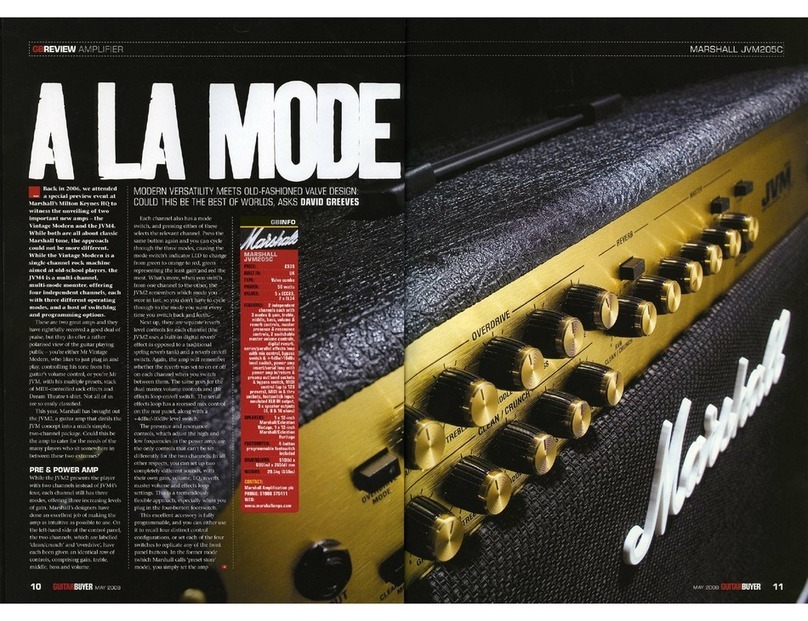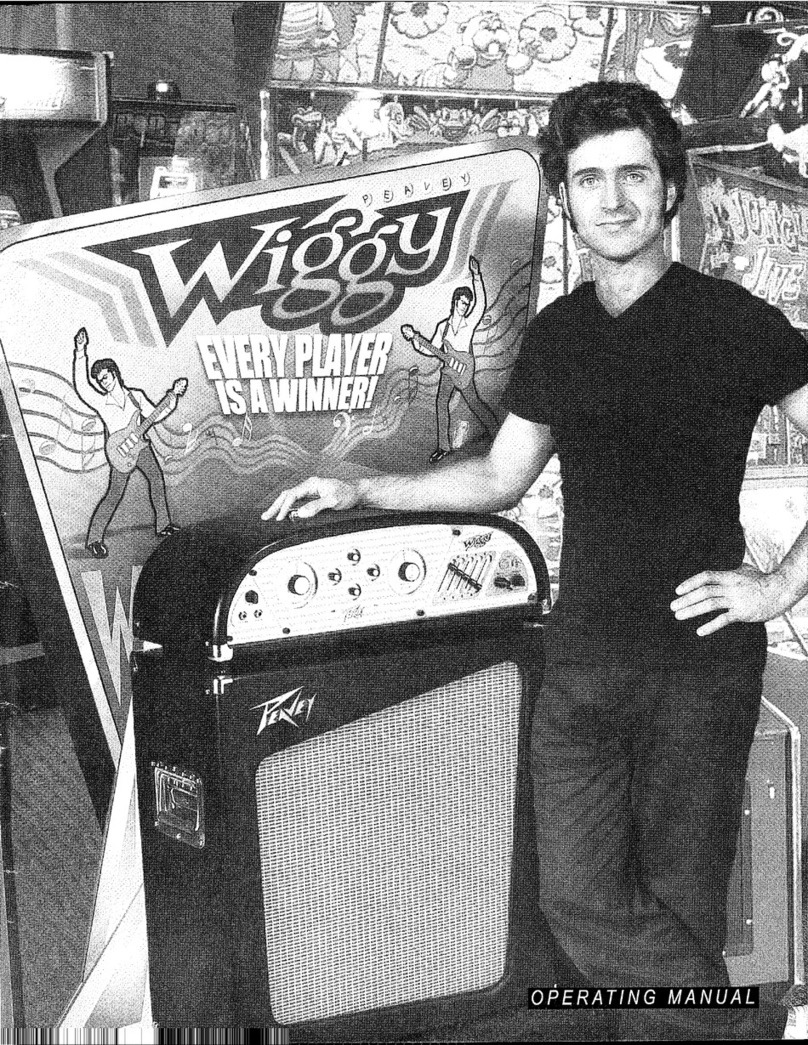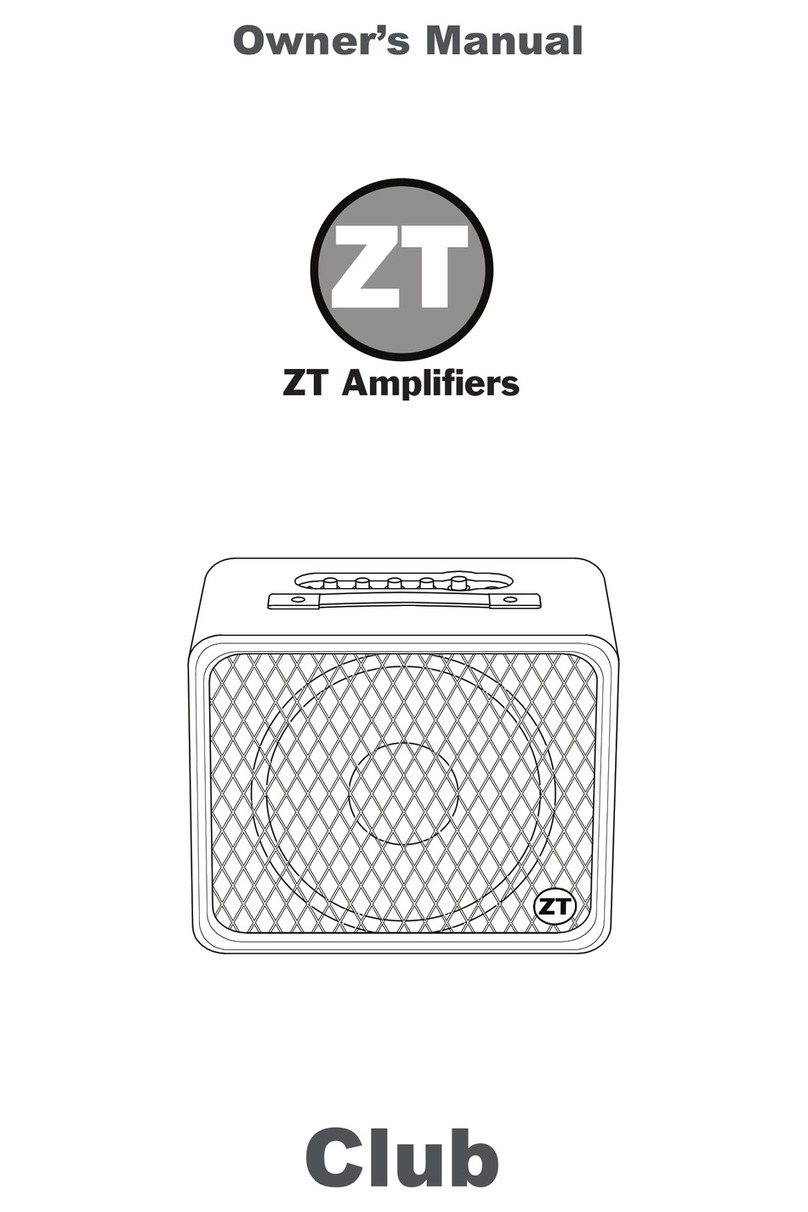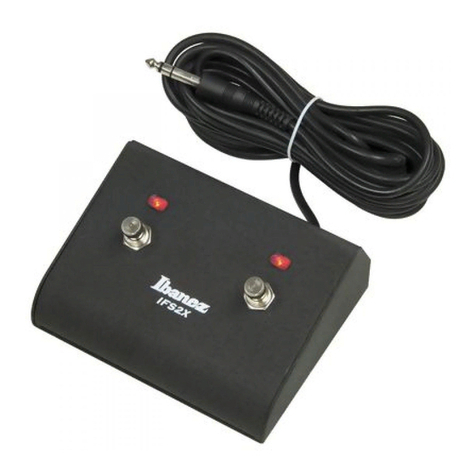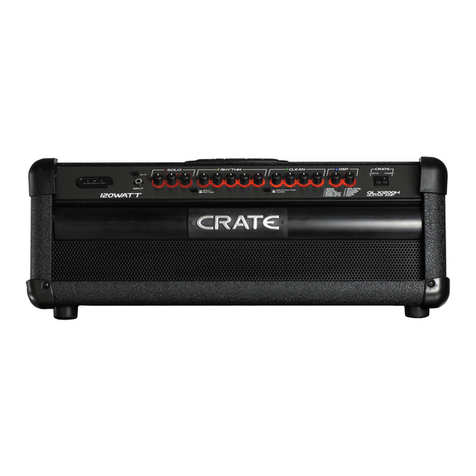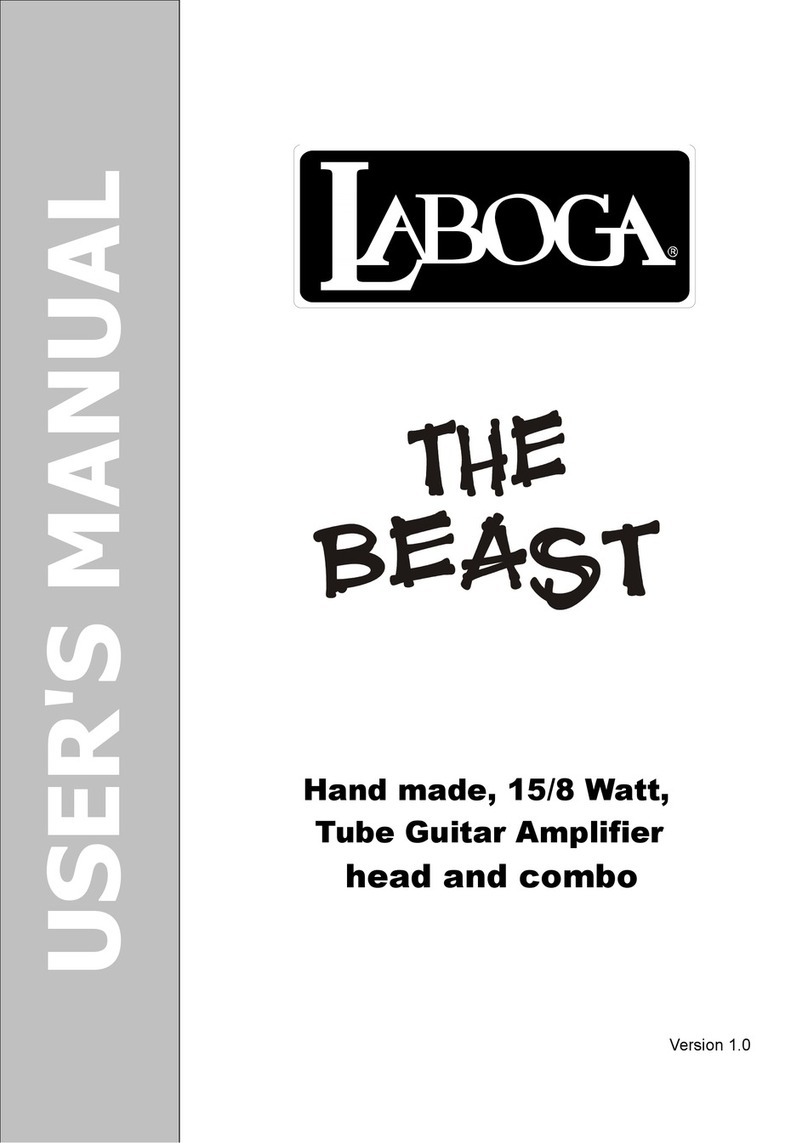Roar Quad 15 User manual

1
User manual
Contents:
1. Safety instructions
2. Introduction
3. Mains power In & Out
4. Connections – Audio & MIDI
5. Preamp – Channel description
6. Power Attenuator
7. Control & Programming with MIDI
8. Setup Examples
9. Programmable/MIDI – controlled
pickup switching
10. Tube replacement & bias adjustment
11. Specifications & Block diagram Setup
Examples
June 2020

2
1. SAFETY INSTRUCTIONS
1. This apparatus (referred to as Quad15) must be connected to earth via the mains inlet.
2. When powering other class I apparatus via any of the three mains outlet sockets of the Quad 15, always use
IEC mains female-male chords with earth conductor.
Do not exceed “Max power from AC OUTLETS” according to Table 1:
AC voltage
(Mains)
Max power to
AC INPUT
Max power from
AC OUTLETS
Max power
consumption
Quad 15
230V (± 10%) 1500 watts 1445 watts 55 watts
115V (± 10% ) 750 watts 695 watts 55 watts
3. Always unplug the apparatus during lightning storms.
4. Operating temperature range: -20 °C to +50 °C
5. Do not cover the ventilation holes on the top and rear panel to avoid excessive temperatures.
6. Avoid using the Quad 15 in damp or wet conditions. Do not expose to water or liquids.
7. Always replace fuses with correct types shown in Table 2:
AC voltage
(Mains)
Mains fuse
(5×20mm cartridge)
Quad15 fuse
(5×20mm cartridge)
230V (± 10%) T6.3A (time-lagging) T1A (time-lagging)
115V (± 10% ) T6.3A (time-lagging) T1A (time-lagging)
8. Make sure the voltage selector is set to correct mains voltage according to your country:
America 115V. Europe 230V. Wrong setting of voltage selector will NOT harm the Quad 15, but only blow the
“Quad 15 fuse”.
9. Do not connect speaker cabinets with an impedance less than 8 ohm total.
10. Servicing and replacement of tubes and fuses shall be performed by qualified service personnel only. See
section 10. “Tube replacement & Bias adjustment”, page 22.
This apparatus complies with the following standards and directives:
EMC directive
IEC 62368-1 Audio/video, information and communication equipment. Part 1 - safety requirements
Overheating protection The apparatus is protected from overheating by a thermo-switch. If the apparatus stop
working due to overheating, turn off the power switch. Make sure to bring the temperature
down and keep the ventilation holes free, then turn on the power switch.
Short circuit protection
of power supply
The internal power supplies are all short circuit protected. In example, if a tube fails, the
HV supply (high voltage) go into current-limiting mode until the thermo-switch
disconnects the power to the apparatus.
Power consumption Idle ~ 45 W, maximum ~ 55 W
Table 2. Fuses.
Table 1. AC power.

3
2. INTRODUCTION
The Quad15 is a an all tube 4 channel guitar amplifier with programmable effect loops, outputting 15 watts to a speaker
cabinet (not included). The output power to the speaker can be attenuated by the built-in power attenuator to retain
the desired amount of power tube overdrive: ”The Sound of Loud at All Levels”
Channel selection, Input (Front/Rear) and Effect loop (Return/Mix/Dry) can be programmed using a MIDI-
footcontroller (not included) or other MIDI-device, see page XXXX. (Musical Instrument Digital Interface)
The knobs and switches for each channel are not programmable.
This manual describes all functions in details while you can go to www.roaramps.com to find soundclips and
instructional videos.
3. AC INPUT & AC OUTLETS (MAINS)
Power up other devices via
the triple mains outlets of the
Quad15; such as effect units
and power amplifiers. Switch
everything on and off with
the mains switch on the front
panel.
The “Mains fuse” might blow
if a device powered from the
Quad15 fails.
The “Quad15 fuse” will only
blow if the Quad15 fails.
The Quad15 is equipped with a
standard IEC mains inlet with
surge protection filter and is
fused by both the “Mains fuse”
and the “Quad15 fuse”.
For world wide use, the
Quad15 is equipped with a
voltage selector to set the
mains voltage level to 230V or
115V. Note that there's no
need to replace any fuses
dependant on the mains
voltage!
UNPACKING

4
4. CONNECTIONS – AUDIO & MIDI
This chapter describes all audio & MIDI connections to the Quad15. Use screened jack-cables of good quality for audio
connections except for the speaker output, where a dedicated speaker cable is recommended.
4.1 INPUT - FRONT
Plug in your guitar with a standard mono jack-cable in the front panel input. When
you turn on the power of the Quad15, the “Front” input will be selected by default
and the signal will be fed to the preamp as any other amplifier.
Input impedance ~ 1 Mohm. Programmable pickup-switch: Connecting your guitar using a stereo jack-
cable, you can switch between two pickup-signals from your guitar with the “Input – Front/Rear” selector
on the front panel. This feature requires a special pickup configuration of your guitar, which is described
in further details on page 18. Notice, that you can’t use the rear input when using a stereo cable for
pickup-switch, since it would overrule the “front input”.
4.2 INPUT – REAR
Plug in a wireless system, effect pedal, guitar with active pickups or any device with a low-
impedance output. To activate this input, simply push down the “Input” switch to select “Rear”
(Red LED) and the rear input will be routed to the preamp.
Input impedance ~ 22 kohm. It is not possible to connect both front and rear inputs to the preamp at the same time.
4.3 GUITAR OUT X 2
The signal from “Input – Front” is buffered and routed to the “GUITAR OUT x 2” jacks on the
rear panel. Connect to tuners, recording devices, effect pedals, etc.
These outputs are designed to provide low output impedance with very low noise and distortion for an uncolored pickup
sound ideal for recording and re-amping, etc. This is achieved by a high quality operational amplifier, which is the only
“non-tube” circuitry in the signal chain.
4.4 PRE-GAIN LOOP (GUITAR OUT - > INPUT REAR)
Before the input signal hits any of the four preamp channels, you can insert an effect pedal, etc. in the pre-gain loop.
“Guitar Out” -> Input (effect pedal). Output (effect pedal) –> “Input Rear”. Activate or de-activate the pre-gain loop
with the input selector on the front panel. (Front = Pre-gain loop off. Rear = Pre-gain loop on). Now, your favorite
overdrive pedal can be connected and be a part of a fully programmable setup with only the MIDI-foot controller placed
on the floor.
OD/DIST
Pedal:
Boost pedal:
Noise gate:
Combining the character of one of the many OD/DIST pedals available with the tube gain of the
Quad15 you can achieve your own unique distortion character. An OD/DIST pedal is often used as a
tone shaping device with the gain at lower settings using the tone control to control attack and
presence before the signal is distorted further in the preamp. An EQ or treble boost pedal could be
used as well.
Many guitar players prefer to use a boost pedal before the amp for lead sounds. In example, if you
prefer to use the “Overdrive” channel of the Quad15 for both rhythm and lead, you can add a boost
pedal in the Pre-gain loop and a delay pedal in the Post-gain loop. ATTENTION! Unwanted feedback
might occur if you turn up the overall gain too high, which appears as a squeezing sound. Turn down
the gain or volume on either the OD/DIST/BOOST pedal or the Quad15.
To mute unwanted noise during pauses, a noise gate can be inserted in the Pre-gain loop. In example,
you can then activate the noise gate for your hi-gain sound by selecting “Rear input” and de-activate
it for your Clean sound by selecting “Front input”.
Other effects like delay, chorus, flanger, phaser, pitch shifter etc. are typically connected after the preamp in the “Post-
gain loop”, see next page, but always feel free to experiment.

5
4.5 POST-GAIN EFFECT LOOP
The Quad 15 is equipped with a classic effect loop between the preamp and the power amp. With simple controls, you
can program whether the effect loop should be parallel, serial or de-activated:
Return on
(Red LED):
The effect signal from the “Return” input on the rear panel is fed to the power amp.
Dry on
(Green LED):
The “Dry” signal from the preamp is fed directly to the power amp for maximum sound
quality.
Mix
(Both on):
The “Return” and “Dry” signals are mixed in a tube stage and fed to the power amp.
Both off:
All signals to the power amp are muted. This can be used for a “Tuner-preset” or
complete silence during pauses.
Rack effects:
Effect pedals:
Connect a stereo jack cable from “SEND” to the input of the effect unit for a
semi-balanced output at +4dBu signal level. Connect a mono cable from the
output of the effect unit to the “RETURN +4dBu” of the Quad15. This way,
the signal level is kept at the professional +4dBu level without the need for
level switches. Many amplifiers are equipped with level switches at the rear panel that can
be hit by accident in tense live situations. Furthermore, these level switches tend to be noisy
over time and will eventually degrade the signal path, which is why they are avoided in the
Quad15. Also the built-in switch in jack connectors is not used in the Quad15 due to the same
reasons.
Connect a mono jack cable from “SEND” to the input of the effect pedal for
a standard instrument level suitable for effect pedals (- 10 dBV).
Connect a mono jack cable from the output of the effect pedal to “RETURN
-10 dBV” input.
Mix (both on):
(Parallel loop)
Most multi-effect units are equipped with a “Kill-dry” function, which only lets the processed (wet)
signal through. This is useful when you let the Quad15 mix the dry and wet signal. The preset volume
of your multi-effect unit will now set the effect level of your sound. Typical effects for this setup are:
Delay, reverb, chorus, flanger, phaser, modulation, EQ, etc.
This setup will preserve the highest possible sound quality and lowest noise level, since it’s only the “wet” part of the sound
that is processed by digital converters, etc. If the effect unit cannot mute the direct signal completely, a weird sound can
occur that cancels some frequencies in an unwanted way. Here, it's preferable to use the “Return” only mode instead. For
stereo setups, see page 16.
Return only: If you want to use the effect pedal's own mix function, or an effect with no dry signal like pitch
shifters, noise gates, EQ’s, etc., you can turn on the “Return” signal only. Also effects like phasers,
flangers and tremolos might benefit from this setting.
Monitoring and comparison of the Dry and Effect Return signals
On the Quad 15 you can easily turn the “Return” and “Dry” signal on and off, which is useful
when you setup your effects. In example, delay effects usually have a hi-cut filter for the “delays”
to dampen the attack. This thickens the tone in your sound without adding too much “noise”
from pick attacks. Listening to the dry and wet signals solo before blending them is a useful tool
to learn how your different effects work.
Warning! AVOID GROUND LOOPS to minimize hum and noise.
Use a power supply with isolated outputs when you insert an effect pedal in both “Pre-gain loop” and “Effect loop”.
Make sure the jack connectors for the “Pre-gain loop” don't touch the jack connectors for the “Effect loop”.
Other manuals for Quad 15
1
Table of contents
